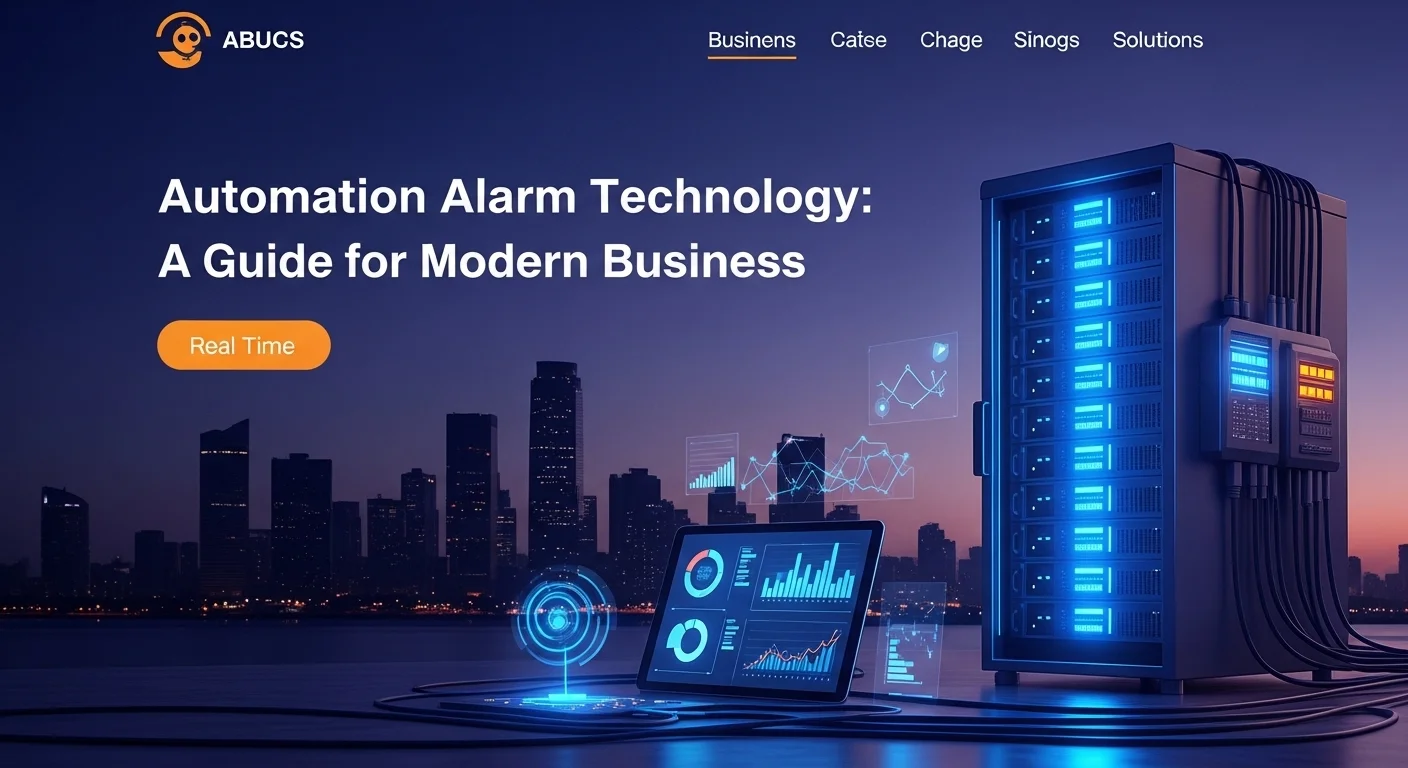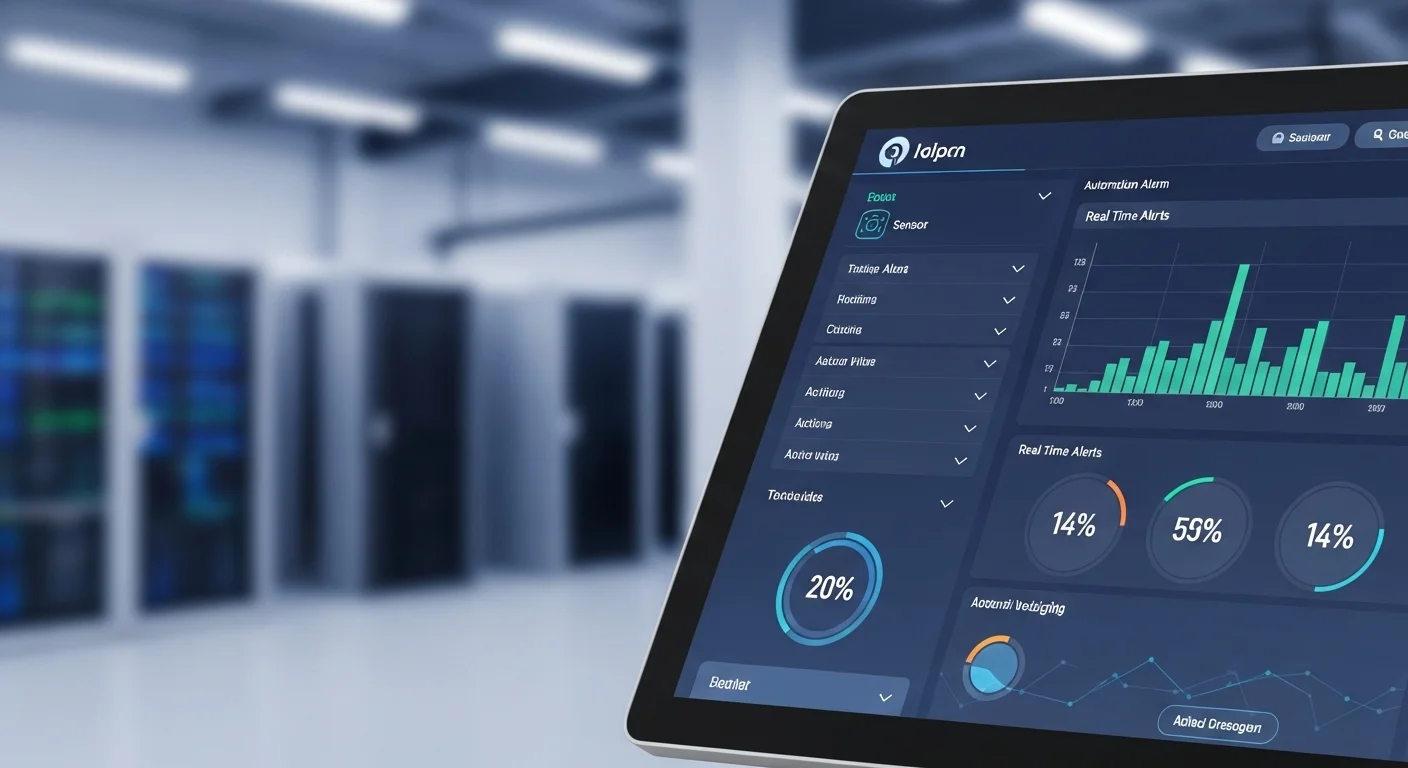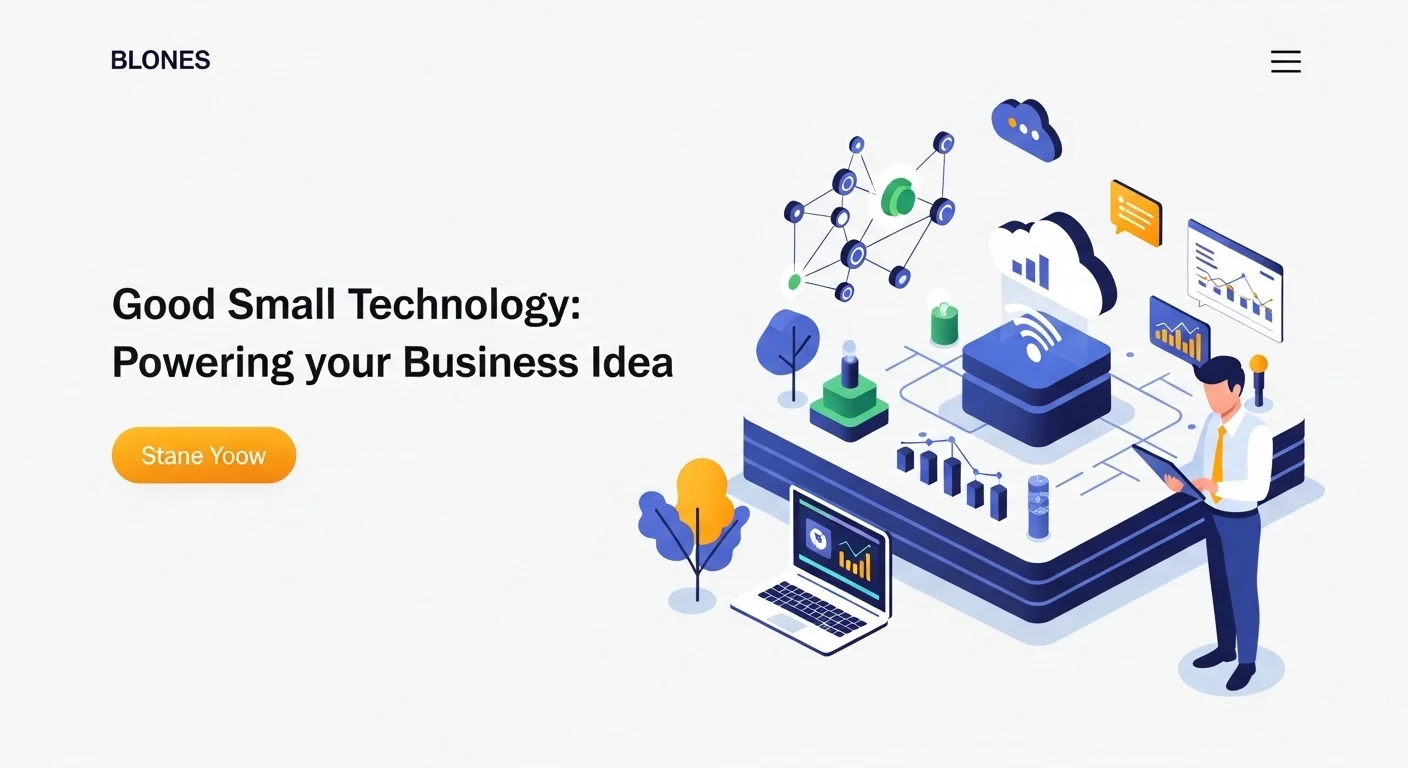Automation Alarm Technology Explained: A Practical Guide for Modern Business

Executive Summary
In business, it often feels like you're just reacting to problems. An automation alarm system changes that. It's about getting ahead of issues before they impact your customers or your bottom line. Think of it as a smart, proactive layer for your entire operation—from IT systems that flag performance dips before a crash, to security that intelligently spots a real threat. I've seen firsthand how this technology cuts down on human error, speeds up response times, and gives leaders a clear view of what’s really happening. This guide will walk you through what it is, how it works, and how you can use it to build a smarter, more resilient business.
Table of Contents
Table of Contents
- What is Automation Alarm and Why Does It Matter?
- A Complete Guide to Implementing Automation Alarms
- Expert Tips for Mastering Your Automation Strategy
What is Automation Alarm and Why Does It Matter?
When I started in tech, an 'alarm' meant a loud siren triggered by a broken window. Today, 'Automation Alarm' describes a far more intelligent and crucial concept that has become the nervous system for modern businesses. It’s about shifting from a reactive, 'what just broke?' mindset to a proactive, 'what might break soon?' strategy. At its heart, an automation alarm uses technology to monitor events, detect problems, and trigger a response automatically, with little to no human help. This applies to both physical security—like a smart office—and the digital world of your IT infrastructure running smoothly.
Many of us first see this in our own homes. Think about home alarm and automation. Years ago, you had a separate keypad for your security system. Now, platforms like Alarm.com let you control your locks, lights, cameras, and thermostat from a single app. When a sensor is tripped, it doesn't just make noise; it can lock the doors, turn on all the lights, and send a video clip to your phone. This is the core idea: integrated devices working together based on smart rules. The Alarm.com automation platform is a great example of how a unified system can create powerful, customized security for homes and businesses by seamlessly connecting different pieces of technology.
Now, let's scale that idea up to a business. In cybersecurity, this technology is the engine of a modern Security Operations Center (SOC). I’ve worked with teams that used to drown in thousands of daily alerts. By implementing Security Orchestration, Automation, and Response (SOAR) platforms, they could teach the system to handle the noise. For instance, when the system detects repeated failed logins from a suspicious location, it doesn't just send an alert. It can automatically block that IP address, temporarily lock the account, and open a support ticket for an analyst to review. This slashes the response time from hours to seconds, which can be the difference between a minor incident and a catastrophic data breach.
It’s just as vital for keeping your IT infrastructure running smoothly. Cloud monitoring tools are the unsung heroes of the digital age. They watch your servers and websites 24/7. An advanced automation alarm can be set up to watch for a spike in website traffic. Instead of your site crashing under the load, the system can automatically add more server resources to handle the demand, then scale back down when traffic returns to normal to save money. This proactive management keeps your business online and your customers happy without a single late-night call to your IT team.
The applications in the industrial world are just as impressive. On a factory floor, sensors monitor the vibration and temperature of critical machinery. An automation alarm system can analyze this data to predict an impending failure. Instead of a sudden breakdown that stops the entire production line, it alerts the maintenance crew to schedule a repair during planned downtime. It's the same principle as your smart alarm home automation system adjusting the temperature for comfort, but here it’s optimizing for millions of dollars in production uptime.
This integration of different systems is the key. Apple's HomeKit alarm automation, while for consumers, teaches a valuable business lesson about secure, user-friendly integration. It forces devices from different brands to speak the same language under a strict security protocol. Businesses are crying out for this same simplicity. They want to manage building access, server health, and supply chain inventory through a single, intelligent engine. This holistic approach is what turns a pile of separate gadgets and software into a true automation alarm strategy that drives smarter and faster operations.
Ultimately, automation alarms are necessary because of the sheer complexity of our world. No human team can manually watch every signal from a global network or a smart factory. AI and machine learning are now being woven into these systems, teaching them to learn what 'normal' looks like and to spot subtle issues a person would miss. This moves us beyond simple alarms to intelligent, context-aware alerts that are more accurate and cause fewer false alarms—a problem we call 'alert fatigue.' This partnership between human expertise and machine efficiency is the future, creating safer, more resilient, and highly optimized businesses.

A Complete Guide to Implementing Automation Alarms
Putting a powerful automation alarm strategy in place is about more than buying software; it's about understanding the moving parts and having a clear plan. Here’s my guide to building one, based on years of helping businesses get it right.
The Architecture: How It Actually Works
I like to explain the architecture in four simple steps. Think of it as a security guard who can see, think, and act at superhuman speed.
1. The Eyes and Ears (Data Collection): First, the system needs to gather information. In the physical world, this means security cameras, motion detectors, and smoke alarms. In your digital world, it’s log files from servers, network traffic, and application performance data. For a home alarm and automation system, this layer uses wireless protocols like Z-Wave or Wi-Fi. The goal is to get reliable data from every source that matters.
2. The Brain (The Central Hub): All that data flows to a central hub for processing. In a smart home, this might be a physical device in your closet or a cloud service like Alarm.com. For a business, this 'brain' is often a powerful software platform like a SIEM (for security data) or an IT monitoring tool (like Datadog). This is where raw, messy data gets organized and prepared for analysis.
3. The Rulebook (The Automation Engine): This is where the magic happens. The engine analyzes the data and decides if something is wrong based on rules you've set. A rule can be simple ('If the front door opens after midnight, send me an alert') or incredibly complex, like correlating network traffic with user behavior to spot a stealthy cyberattack. The power of a platform like alarm com home automation comes from its sophisticated rules engine that lets you create customized responses.
4. The Response (Action and Notification): Once the engine flags an event, the system takes action. This could be an automated response, like locking a door or isolating a potentially infected computer from the network. It also includes notifying the right people. A critical alert might trigger a phone call to the on-call engineer, while a minor one might just be an email. Good systems even have escalation logic: if the first person doesn't acknowledge the alert, it automatically contacts their manager.
Business Strategy: How to Implement It Successfully
I've seen expensive tech projects fail because of poor strategy. Here's how to avoid that.
1. Start with 'Why': Before you look at any vendors, sit down with your team and define what you're trying to protect and what a real 'emergency' looks like for your business. Create an 'alarm philosophy' that outlines priorities and response time expectations. Without this, you'll drown in meaningless alerts.
2. Choose Your Tools Wisely: The market is full of options. I tell my clients to look for these three things:
- Plays Well with Others: Can the platform connect to the tools you already use? A system like alarm com automation is valuable because of its huge ecosystem of compatible devices. Look for strong API support.
- Grows with You: Will the system handle your needs in three years? Cloud-based platforms are often easier to scale.
- Fits Your Workflow: Can you customize the rules and alerts to match how your business actually operates?
3. Don't Boil the Ocean: Start small. Pick one critical area—like monitoring your e-commerce checkout process—and automate that first. This gives you a quick win and allows your team to learn. Proper training is non-negotiable. Your people need to trust the system and know exactly what to do when an alert comes in.
4. Never Stop Tuning: An automation system is like a garden; it needs constant tending. Review its performance regularly. Are you getting too many false alarms? Did you miss something important? Use the data to refine your rules and make the system smarter over time. It's an ongoing process, not a one-time setup.
Available Resources: A Quick Comparison
The right tool depends on your needs and technical skill.
For Home and Small Business Security:
- Managed Services: Alarm.com is a top choice for those who want a professionally installed and monitored system. It’s polished and reliable, all managed through one app.
- DIY Ecosystems: Apple's HomeKit alarm automation is fantastic for privacy and seamless integration if you're in the Apple world. You pick the devices and build the rules yourself.
- Open-Source: For the tech-savvy, Home Assistant offers total control over your home alarm and automation with no subscription fees, but you're responsible for setup and maintenance.
For IT and Cybersecurity:
- Enterprise Security: Platforms like Splunk and Palo Alto Cortex XSOAR are the heavyweights for security monitoring and response. They are incredibly powerful but require significant investment and expertise.
- Infrastructure Monitoring: Tools like Datadog and Dynatrace are masters at watching the health of your cloud servers, apps, and networks.
Deciding between a paid, proprietary system and an open-source one is a key choice. Proprietary tools offer support and a smoother experience but can be costly. Open-source gives you ultimate flexibility for free, but the 'cost' is your own team's time and expertise. By matching the right technology with a clear business plan, you can build a system that truly protects and streamlines your operations.

Expert Tips for Mastering Your Automation Strategy
Deploying an automation alarm system is the first step. Turning it into a strategic asset that makes your work life easier and your business stronger is the real goal. Here are the hard-won lessons and strategies I share with every team I work with, whether they're managing a global data center or a smart office.
Best Practices from the Trenches
1. Declare War on Alert Fatigue: I once worked with a team that received over 3,000 alerts a day. They ignored almost all of them. The day a critical database alert came through, nobody saw it until customers started calling. This is why my first rule is to prioritize ruthlessly. Every alert must have a clear severity level (e.g., Critical, Warning, Info). A 'Critical' alert should trigger a phone call. A 'Warning' might be a message in a team chat. An 'Info' alert might just update a dashboard. This saves your team's focus for what truly matters.
2. Make Every Alert Actionable: An alert that just says 'Server CPU is high' is useless. It creates more work. A great alert gives you everything you need to start solving the problem. It should say: 'CRITICAL: The production database server CPU has been at 95% for 10 minutes. This may cause customer checkouts to fail. Click here to view the performance dashboard: [link].' This transforms a vague problem into a clear task.
3. Treat Your Alerts Like Code: In a modern tech environment, your alert rules should be stored in a version control system like Git, just like your application code. This means changes are reviewed by peers, tracked over time, and can be easily rolled back if something goes wrong. It’s a disciplined approach that prevents the kind of fragile, undocumented alert configurations that I’ve seen cause major headaches.
4. Automate Fixes, but with a Safety Switch: The holy grail is a system that not only finds problems but also fixes them. For example, automatically restarting a crashed service. This is powerful, but you have to be careful. Start with low-risk, predictable fixes. An automated 'fix' that's poorly designed can cause an even bigger problem. Always build in a manual override and make sure every automated action is logged for review.
5. Secure Your Security System: Your automation alarm system holds the keys to the kingdom. If an attacker compromises it, they could disable your defenses or create chaos. You must protect it rigorously. Use strong multi-factor authentication, encrypt all its communications, and limit access to only those who absolutely need it. This principle of security by design is a cornerstone of trustworthy ecosystems like HomeKit alarm automation.
Tools and Experiences That Make a Difference
The right tools unify your workflow. For example, platforms like alarm com home automation succeed because they bring many different devices into one manageable interface. Businesses need the same thing. Tools like PagerDuty or Opsgenie can act as a central hub for alerts from all your different systems—cloud, security, applications—and manage your on-call schedules and escalations. This stops your team from having to juggle ten different dashboards.
I remember working with an online retailer whose site would slow to a crawl during big sales. Engineers would frantically watch graphs and try to add servers by hand. It was pure chaos. We implemented an automation alarm tied to their cloud provider. We set a rule: when traffic and server response times cross a certain threshold, automatically add more servers. It's the business equivalent of a smart thermostat in an alarm home automation setup—an automatic response to maintain an optimal state. The result? A stable website during their biggest sales event ever, and an engineering team that could finally sleep through the night.
Even small businesses can apply these principles. The concepts behind alarm com automation are perfect for smart office management. You can integrate security cameras, access control, and lighting. A simple rule could be: 'If the last person badges out for the day, wait 30 minutes, then turn off all lights and lock all doors.' It saves energy, boosts security, and is completely automatic.
Where to Keep Learning
This field is always changing. To stay current, you need reliable resources. For anyone serious about this at an enterprise level, I often point them toward Gartner's research on 'hyper-automation.' Their reports offer expert analysis and strategic roadmaps that are invaluable for technology leaders looking to combine AI with automation for transformative results. It's a great place to understand where this technology is headed.
By adopting these best practices and using the right tools, you can move beyond simple alarms. You can build an intelligent system that becomes a core strategic advantage, driving efficiency and security across your entire business.
Expert Reviews & Testimonials
Sarah Johnson, Business Owner ⭐⭐⭐
The information on Automation Alarms is solid, but as a small business owner, I was hoping for more practical, step-by-step examples I could use right away.
Mike Chen, IT Consultant ⭐⭐⭐⭐
A very helpful article on Automation Alarms. It clarified a lot for me as an IT consultant, though a few of the more technical concepts could have been broken down even further.
Emma Davis, Tech Expert ⭐⭐⭐⭐⭐
Fantastic article! As a tech specialist, I found this to be a comprehensive and perfectly clear guide on Automation Alarm technology. It's been a huge help for my work.



